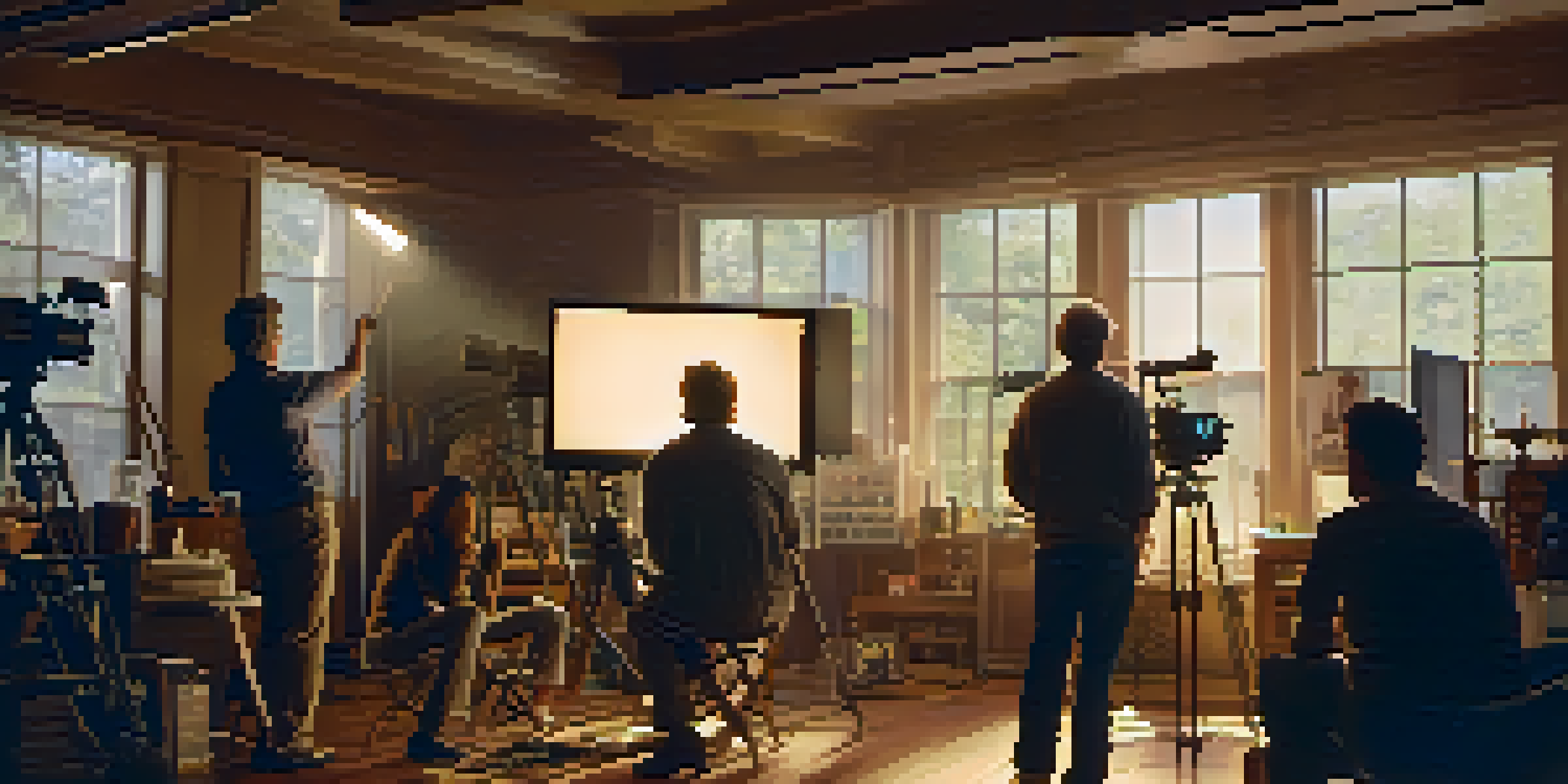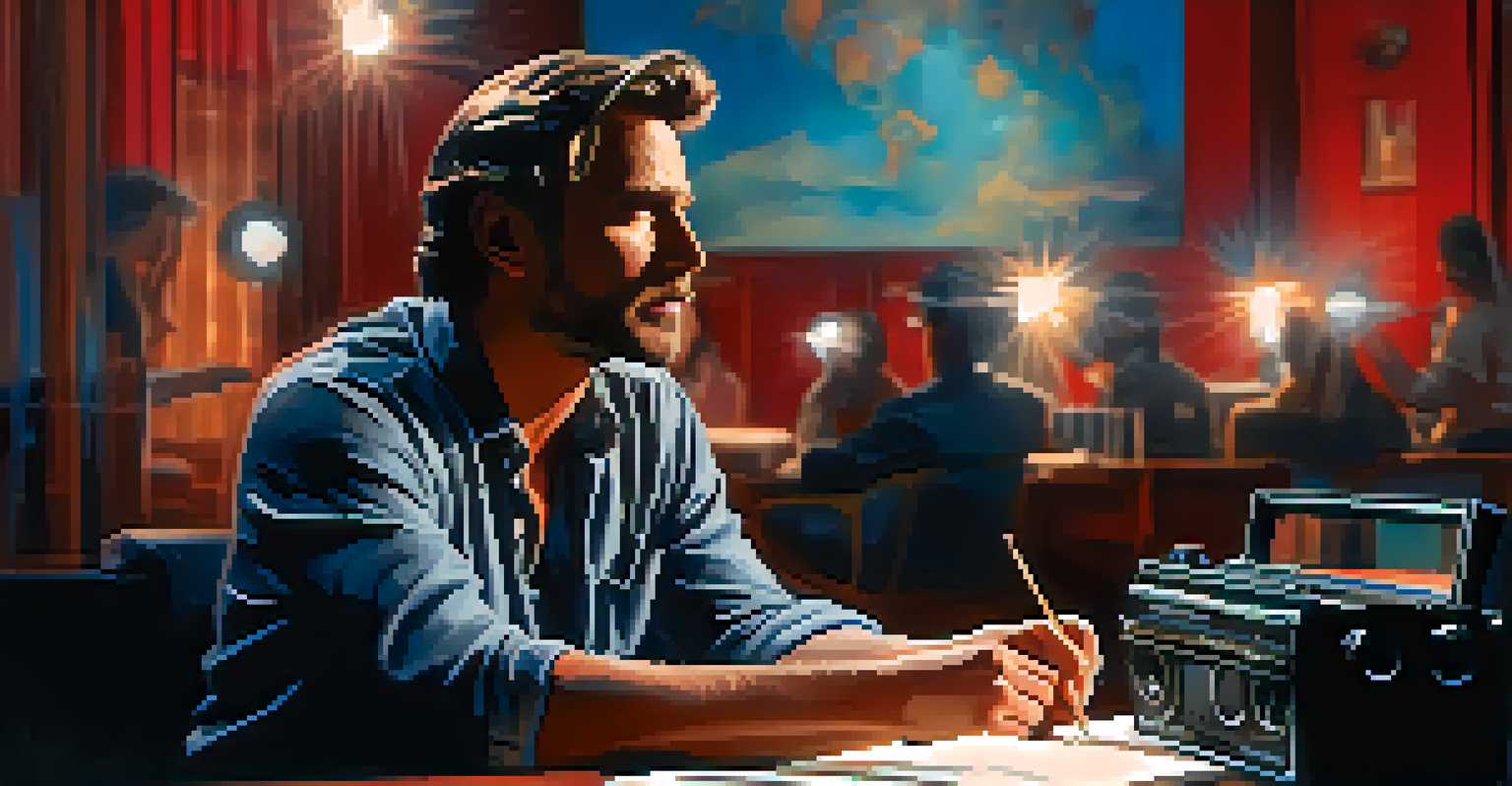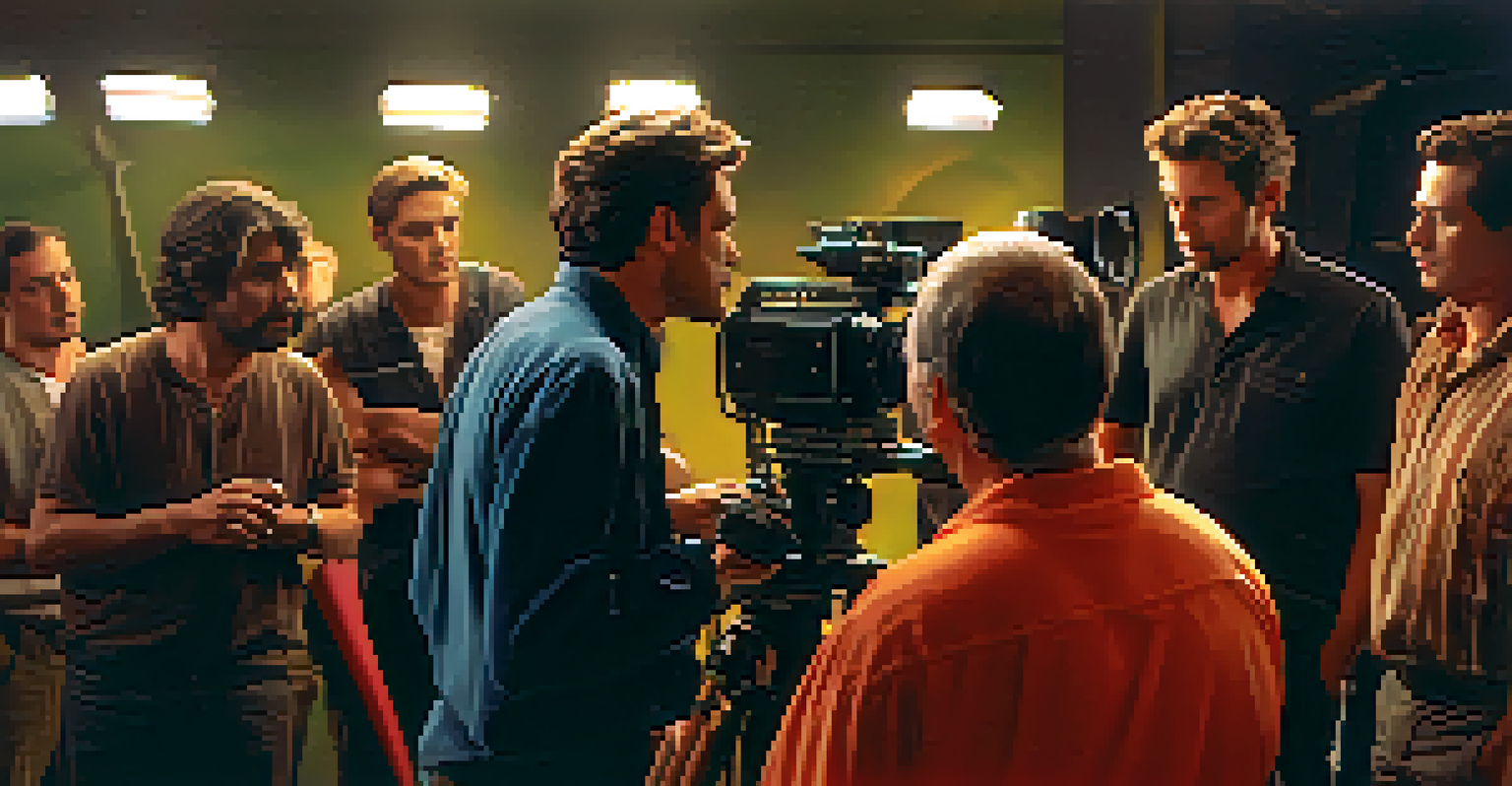The Role of the Director: Guiding the Film Vision

Understanding the Director's Vision in Filmmaking
At the heart of every great film lies the director's vision, serving as a guiding light for the entire production. This vision encompasses everything from the storyline to how characters interact and the overall tone. A director must be able to encapsulate their ideas clearly, ensuring that the cast and crew are on the same page. Think of it as a captain steering a ship through turbulent waters, where clarity and direction are crucial to reaching the destination.
A film is never really good unless the camera is an eye in the head of a poet.
Directors often begin with a script, but their real work lies in interpreting and expanding that narrative through their unique lens. They might envision specific moods or themes that resonate with audiences, drawing from personal experiences or artistic influences. This creative interpretation is what makes each film distinct, adding layers of meaning that may not be immediately apparent in the script alone.
Ultimately, a director's vision shapes the entire filmmaking process, influencing everything from casting choices to set design. When the vision is compelling, it can elevate a film from good to unforgettable, leaving a lasting impact on viewers. This crucial role requires not just creativity but also the ability to communicate and collaborate effectively with a diverse team.
The Director's Role in Shaping a Film's Story
One of the director's primary responsibilities is to shape the film's narrative arc and pacing. This involves determining how the story unfolds, including the structure of scenes and the flow of dialogue. A strong director knows how to build tension, create emotional beats, and deliver satisfying resolutions, much like a composer crafting a symphony's crescendos and decrescendos.

Directors often work closely with screenwriters to refine the script, suggesting changes that enhance character development or plot coherence. They may ask crucial questions like, 'What motivates this character?' or 'How does this scene advance the story?' These inquiries help refine the narrative, ensuring that every moment contributes meaningfully to the overall journey.
Director's Vision Guides Filmmaking
A director's vision serves as the foundation for a film, shaping everything from the storyline to character interactions and overall tone.
Additionally, a director's interpretation of the story can significantly influence how audiences perceive the film's themes. By emphasizing certain aspects or introducing visual metaphors, directors can guide viewers toward deeper understanding or emotional responses. This storytelling craft is a vital part of a director's role, showcasing their ability to connect with the audience on multiple levels.
Casting and Collaborating with Actors
Casting the right actors is a pivotal part of a director's job, as these performers bring the characters to life. A director often holds auditions and makes tough decisions, seeking actors who not only fit the roles but also resonate with the film's vision. This process is akin to assembling a puzzle, where every piece must fit perfectly to create a cohesive picture.
The director's job is to make sure that the story is told in a way that it can be understood by the audience.
Once the cast is selected, the director must build a rapport with the actors to foster trust and cooperation. This relationship is essential for encouraging performances that feel authentic and compelling. Directors often conduct rehearsals, providing feedback and guidance to help actors fully embody their characters, much like a coach motivating a team to achieve their best.
Moreover, directors must balance their creative vision with the actors' interpretations of their roles. This collaboration allows for a richer exploration of character dynamics, leading to unexpected moments that can elevate the film. Ultimately, a director's ability to guide performances can significantly enhance the story's emotional impact and authenticity.
Visual Storytelling: Crafting the Film's Aesthetic
Visual storytelling is another key aspect of a director's role, as they must create a cohesive aesthetic that supports the film's narrative. This involves working closely with the cinematographer to determine camera angles, lighting, and shot composition. Think of it as painting a picture, where every brush stroke adds depth and meaning to the final artwork.
The director's vision extends to the film's color palette and visual motifs, which can evoke specific emotions or themes. For instance, warm colors might convey nostalgia, while cooler tones could suggest tension or isolation. By thoughtfully selecting these visual elements, directors can enhance the audience's emotional experience, drawing them deeper into the story.
Collaboration is Key on Set
Effective communication and collaboration among the director, cast, and crew are crucial for creating a cohesive and dynamic film.
Additionally, the director collaborates with the production design team to create sets and locations that reflect the film's world. Every detail, from furniture to costumes, contributes to the overall aesthetic and helps immerse viewers in the narrative. This attention to visual storytelling not only captivates audiences but also reinforces the film's themes and character journeys.
Directing the Technical Aspects of Filmmaking
While the creative side of directing is often highlighted, managing the technical aspects is equally crucial. Directors oversee everything from sound design to special effects, ensuring that these elements align with their vision. This requires a solid understanding of filmmaking technology and the ability to communicate effectively with the technical crew, much like a conductor leading an orchestra.
Directors collaborate with editors during post-production to shape the final cut of the film. This process involves making choices about pacing, scene transitions, and even which performances to highlight. A good director knows that editing is where the film truly comes together, and they must be open to adjustments that enhance the overall narrative.
Moreover, directors must stay adaptable, as unforeseen challenges can arise during filming. Whether it's weather delays, technical malfunctions, or performance issues, a director's ability to problem-solve and maintain focus on the vision is vital. This resilience can make the difference between a smooth production and a chaotic one, ultimately affecting the film's quality.
Communicating with the Crew: Building a Collaborative Environment
Effective communication is at the core of a successful film set, and the director plays a pivotal role in fostering collaboration among the crew. By clearly articulating their vision and expectations, directors can create an environment where everyone feels valued and motivated to contribute their best work. Imagine a captain leading a crew on a ship—every member has a role, and clear communication ensures smooth sailing.
Directors must also be open to input and ideas from their team, as collaboration often yields innovative solutions and approaches. This exchange of ideas can lead to unexpected creative breakthroughs, enhancing the film in ways the director may not have initially envisioned. A great director knows that the best films are often a product of teamwork rather than a solitary effort.
Directors Influence Film Reception
A director's unique style and engagement with audiences significantly impact how a film is received and its legacy in cinema.
In addition, maintaining morale on set is crucial, as filmmaking can be a high-pressure environment. A director's positive attitude and willingness to listen can help alleviate stress and foster a sense of camaraderie. When everyone feels supported and inspired, the result is a more cohesive and dynamic production that shines through in the final film.
The Director's Influence on Film Reception and Legacy
The influence of a director extends far beyond the production process—they play a significant role in how a film is received by audiences and critics alike. A director's unique style and storytelling approach can become synonymous with their work, contributing to their legacy in the film industry. This is why many directors, like Quentin Tarantino or Wes Anderson, are instantly recognizable by their distinct cinematic fingerprints.
Moreover, directors often engage with audiences through marketing and promotional efforts, sharing their insights and passion for the project. This connection can enhance viewer anticipation and appreciation, leading to a more positive reception. A director's ability to articulate their vision during interviews or press events can create a deeper bond with the audience, making them more invested in the film.

Ultimately, the director's impact on a film can shape its legacy, influencing how it is remembered and studied in the years to come. A powerful vision can resonate with viewers, establishing a film as a classic that endures over time. In this way, directors not only shape individual films but also contribute to the broader cultural landscape of cinema.